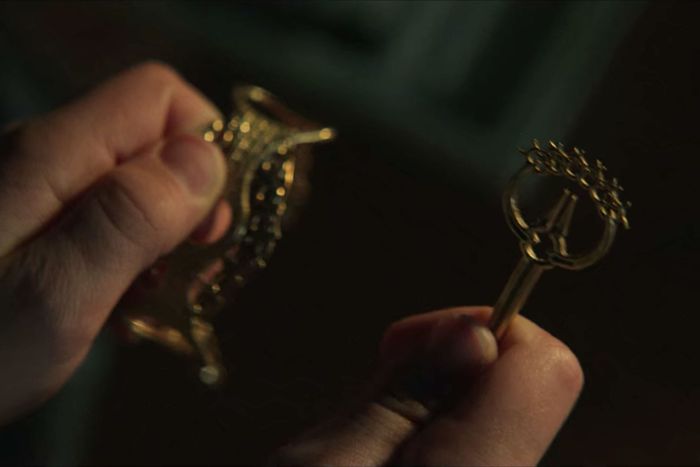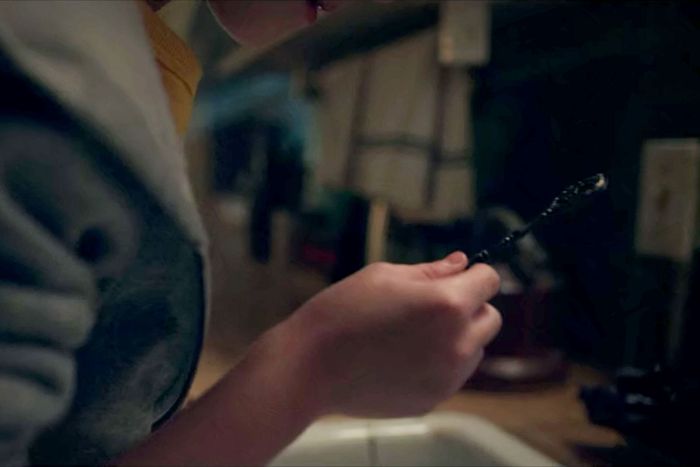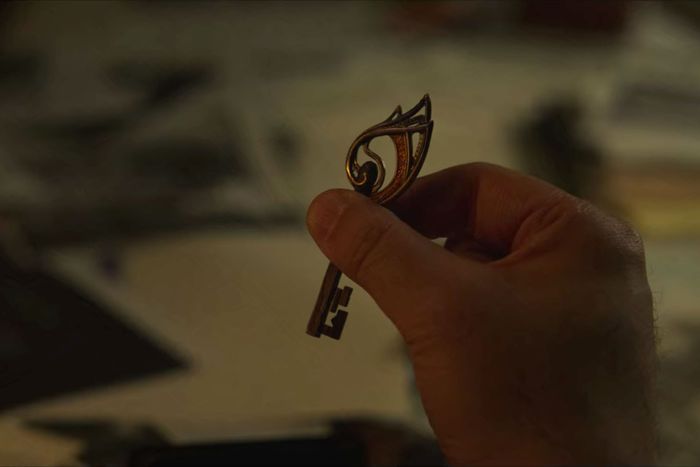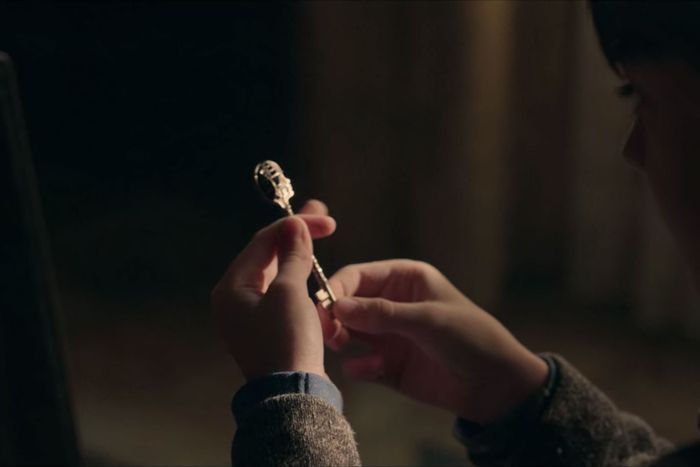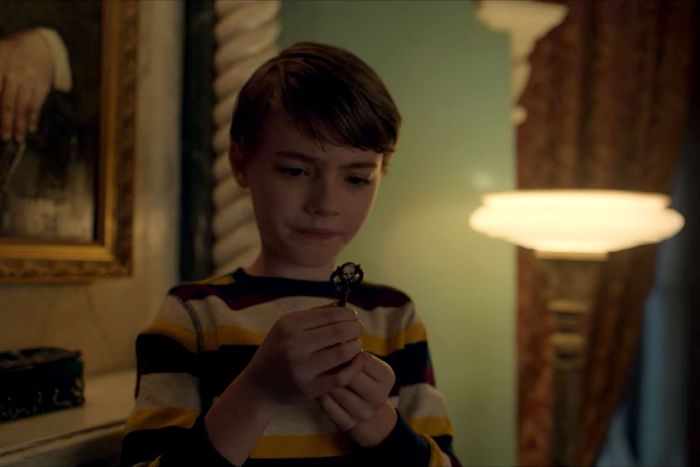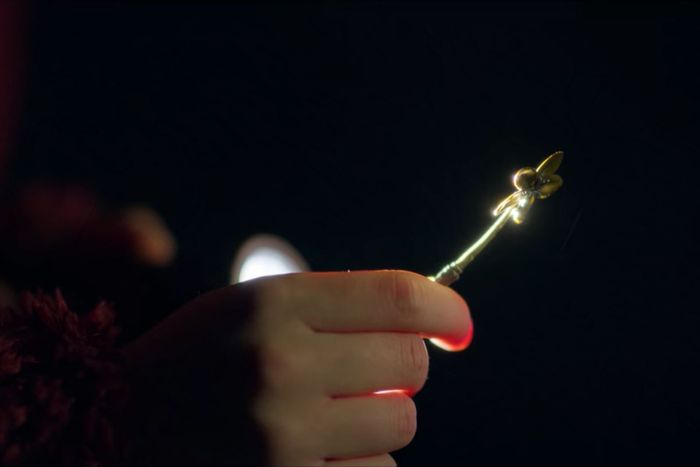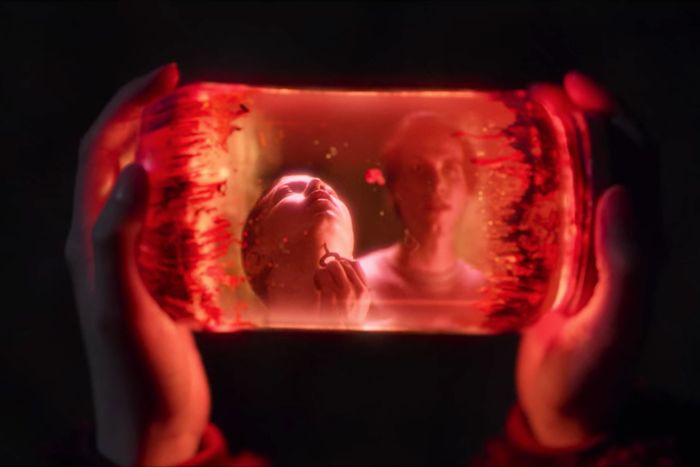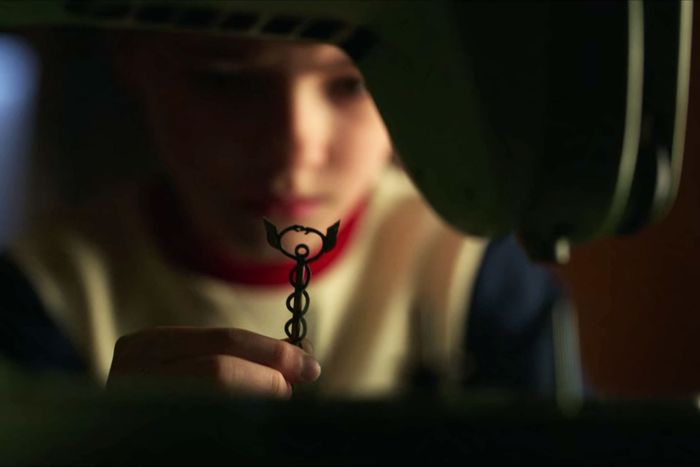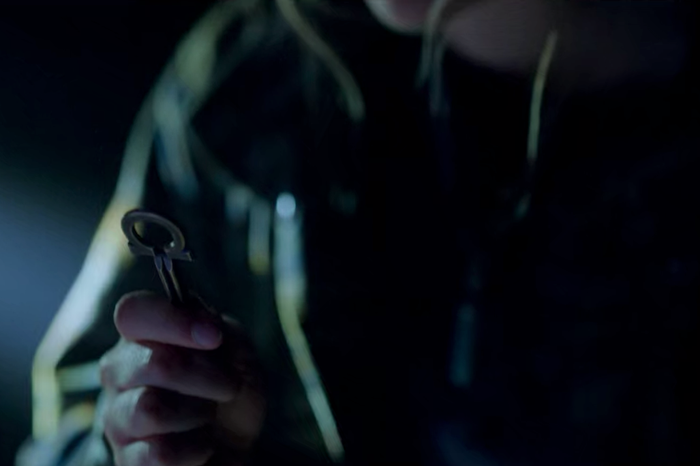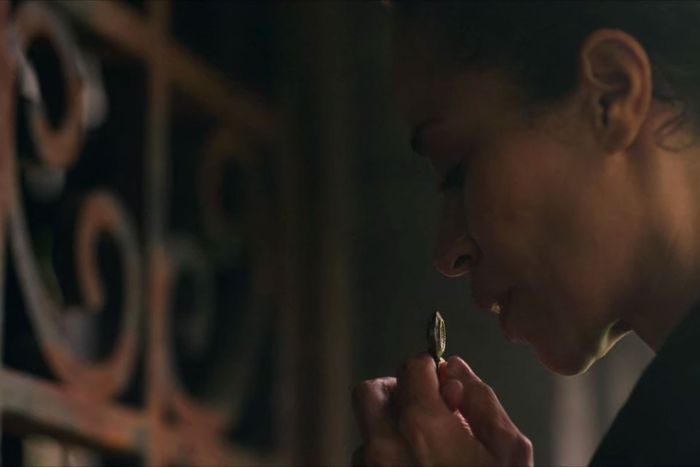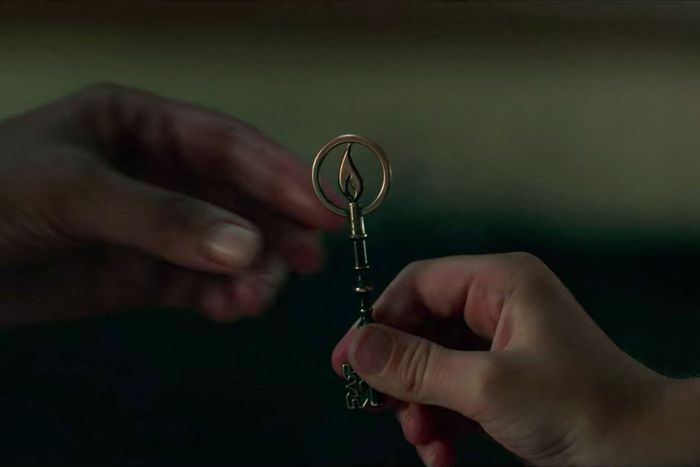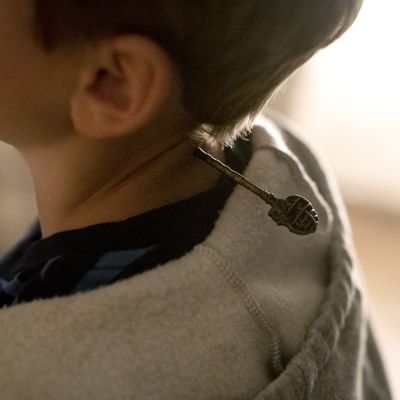
Netflix’s loose adaptation of Joe Hill and Gabriel Rodriguez’s beloved comic-book series Locke & Key has had fun all season with the magical keys that keep dropping into the lives of its main characters. The arrival of a new key into the hands of the Locke children can fundamentally shift what it is they’re facing and their ability to deal with it, so understanding them is key (sorry) to unlocking (sorry again) the show’s plot. Since it can be a little tough to keep track of all of the keys, where you first saw them, and what they do over the course of the first season’s ten episodes, allow us to guide the way with a chronological look at the dozen keys we’ve seen so far. As readers know, some of these are straight out of the books, while others are inventions of the show.
Note: Major spoilers for the first season of Locke & Key lie ahead.
The Anywhere Key (Episode 1)
There’s a reason this was the first key introduced. Arguably the most powerful key in the world of the show, the Anywhere Key was hidden in a bracelet belonging to Kinsey Locke until her brother Bode Locke dismantled it and learned what it can do. When the Anywhere Key is inserted into a door, that door can then be opened to anywhere in the world. Bode uses it to go to the Matheson ice-cream parlor that Scot works at, but the lady in the well — who will later and heretofore in this piece be referred to as Dodge — steals it, using it to travel the globe and do things like get a new outfit, choke someone to death, and help free Sam Lesser, the man who murdered Rendell Locke. It’s really an amazing key, one that can facilitate quick escapes and seriously shorten travel times. You’d never have to commute to work again!
The Mirror Key (Episode 1)
This one is a reasonably clever way to introduce viewers to this show’s world of magic, while also revealing that adults don’t remember the same things that kids do. When it’s inserted into a mirror, the reflection in that mirror comes to life, beckoning the person to come inside. Nina Locke follows her dark alter ego into the mirror world and nearly gets stuck there. Tyler Locke has to tie a rope around his waist and go after mom, pulling her out just in time. Importantly, the Locke kids are startled when mom has no memory of the entire affair until she falls off the wagon and the world of key magic comes flooding back to her, only to disappear again when she’s not drinking gin.
The Matchstick Key (Episode 1)
Technically this key doesn’t really play a role in the action in Matheson until episode four, but we do spot it first in the prologue when Mark, one of the Keepers of the Keys, uses it to self-immolate, his house bursting into flames. The power here is pretty simple — no keyhole or door or cabinet needed. Strike the key anywhere, and what you strike bursts into flames. Rather than just give Sam Lesser the Anywhere Key and letting him walk out of prison, Dodge gives him the Matchstick Key, which she obtains from a kid outside Mark’s house. Not only does Sam use it to escape, but it’s a major player in the endgame of the season when Bode uses it to kill Dodge. Or at least, he thinks he does.
The Head Key (Episode 2)
One of the most essential keys in the narrative of season one is also one of the book’s most iconic: a key with a head on top of it. It literally allows access into someone’s mind, and is used primarily on the show to provide exposition through memories. The design of each person’s head is different, with young Bode Locke’s head organized like an arcade and Kinsey Locke’s looking more like a mall. Poor Erin Voss is stuck in her own head after using the Head Key, and other characters use the item often to push the plot forward, including Sam Lesser and Ellie Whedon. It’s an essential key because Dodge needs it to find the location of the Omega Key, learning from Erin that Rendell Locke used the Head Key to hide the Omega Key in his own consciousness.
The Ghost Key (Episode 3)
Another key that’s iconic for fans of the source is the Ghost Key, which has to be used on a very specific door in Key House. Bode Locke discovers it, puts it in the door, and walks through, becoming a ghostly entity that can then travel the grounds; his body looks like a sock without a foot in it back in the house. It allows Bode to spy on people, and ultimately leads to the demise of Sam Lesser, who goes through the door unknowingly, only to have it close behind him. We can safely presume that the ghost of poor Sam is still flying high above Key House, looking sad.
The Music Box Key (Episode 5)
Slightly different than in the source, this key seems at first to just start up a music box, but the Locke kids soon realize its incredible power when Kinsey tells Tyler to shut his mouth and he literally can’t open it again. It’s a key that allows people to turn into puppeteers, and Kinsey, Scot, and Gabe do so at school, making the bully Eden into their plaything. It’s probably a key that we haven’t seen the last of, given its remarkable power to force people to do whatever its wielder dictates. It might have come in handy during the season’s final showdown.
The Flower Key (Episode 5)
A key with a flower on it raises memory jars on the grounds of Key House, memories that belonged once to Duncan Locke, Rendell’s brother. Watching these memories allow the Locke kids to understand what happened when their dad was young, but also explain why Duncan gets hazy when he’s asked about those days. In one of the season’s creepiest moments, Duncan appears to break when watching a memory that should be in his head but is in his hands.
The Identity Key (Episode 5)
A crucial key narratively, the Identity Key is actually first spotted in one of the memory jars that Kinsey finds. It later plays a major role in the endgame of the season, not only as Dodge uses it to transform between the Well Lady and Lucas, but in the final cliffhanger, where it’s revealed that the Identity Key was used on Ellie Whedon to make her look like the enemy of the Lockes. Kinsey, Tyler, and their friends threw what they thought was the entity from the well house through the Black Door, but it was really Ellie, courtesy of the Identity Key. The final episode also reveals that the entity has been using this key all season to look like Gabe and get closer to Kinsey. Why bother doing that? What did it really get Dodge other than information about the Lockes? Maybe we’ll find out more next season.
The Cabinet Key (Episode 6)
At first, this key is kind of a fake-out, as Bode Locke thinks that it just opens an old cabinet in the Key House kitchen. It’s kind of true, but that cabinet is magical. If you put something broken in it, it comes out fixed, although Nina Locke learns that it will not bring people back from the dead. That’s probably for the best.
The Omega Key (First referenced in Episode 8)
The Omega Key has been the source of most of the problems in this story. The One Ring of Locke & Key is first mentioned in episode eight and plays a major role in what’s really a two-part season finale. It turns out that the original Keepers of the Keys found the Omega Key and opened the Black Door, which is what released the entity that possessed Lucas and was trapped in the well. It’s also what Dodge wants more than anything: to return to that door and open it with the Omega Key. Maybe next season, although the Lockes and their pals use the Omega Key to essentially damn Ellie Whedon to eternal purgatory, throwing her body through the portal because they think it’s Dodge.
The Echo Key (Episode 9)
As she’s explaining what happened to the Lockes, Ellie Whedon mentions that she took this one after the Keepers of the Keys split them up, and that it can bring people back. She used the Echo Key at the well house to resurrect Lucas, but it was the entity that possessed her lost love instead.
The Crown of Shadows Key (Episode 9)
The Crown of Shadows is a magical piece of headgear that allows its wearer to control Dementor-like creatures who look like shadows. Of course, the crown can’t just be put on, it needs a key to activate it. Everything that matters in this world needs a key.



